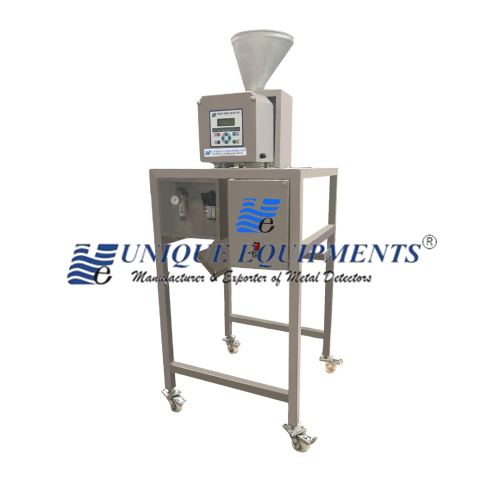What are Quality Reforms and How Do They Affect RTO Standards?
In Australia’s Vocational Education and Training (VET) sector, quality reforms play a pivotal role in maintaining the integrity and effectiveness of training and assessment standards across the country. These reforms aim to improve the quality of education delivered by Registered Training Organisations (RTOs), ensuring that learners are equipped with the skills and knowledge needed to meet industry demands and succeed in the workforce.
Quality reforms are critical for RTOs, as they directly impact how training and assessments are delivered, measured, and monitored. In this article, we will explore what quality reforms are, why they are important, and how they affect the standards that RTOs must adhere to. This insight will help RTOs better understand the need for continuous improvement and compliance with regulatory requirements.
For more detailed insights, you can also refer to the full blog on VET Resources.
What are Quality Reforms?
Quality reforms are initiatives introduced by government bodies and regulatory authorities to improve the standard of education and training delivered by RTOs in Australia. These reforms focus on enhancing the quality, transparency, and accountability of VET providers, ensuring that learners receive high-quality training that meets both national and industry-specific standards.
The Australian Skills Quality Authority (ASQA), the national regulator for the VET sector, is responsible for overseeing these quality reforms and ensuring that RTOs comply with the Standards for RTOs 2015. The goal of quality reforms is to ensure that VET qualifications are credible, relevant, and aligned with current industry needs, making graduates job-ready and equipped for the workforce.
Key Objectives of Quality Reforms
The primary objectives of quality reforms in the VET sector include:
- Improving Training Quality: Ensuring that the training delivered by RTOs is of high quality, meeting both national and industry standards. This involves improving the way training is delivered, assessed, and monitored.
- Ensuring Industry Relevance: Aligning training and assessment practices with current industry demands to ensure that graduates have the skills that are relevant to employers.
- Strengthening Regulatory Oversight: Enhancing the ability of regulatory bodies like ASQA to monitor and enforce compliance, ensuring that RTOs meet the necessary standards for delivering VET qualifications.
- Boosting Transparency and Accountability: Ensuring that RTOs operate with transparency, particularly in areas such as marketing, enrolment, and assessment practices, so that learners and employers can trust the qualifications they provide.
- Increasing Student and Employer Satisfaction: Improving the experience of learners and employers by delivering high-quality training that leads to better outcomes and job readiness.
How Do Quality Reforms Affect RTO Standards?
The implementation of quality reforms has a direct impact on how RTOs operate and deliver their training programs. RTOs must continuously adapt to ensure that they meet the updated standards set out by the regulatory bodies. Below are some key areas where quality reforms influence RTO standards:
1. Training and Assessment Practices
One of the most significant areas affected by quality reforms is how training and assessments are delivered. RTOs must ensure that their training is aligned with the current training packages and that assessments meet the principles of assessment and rules of evidence.
For example, quality reforms may require RTOs to:
- Ensure that their assessments are valid, reliable, flexible, and fair, ensuring all learners are assessed consistently.
- Collect valid, sufficient, current, and authentic evidence of learners’ competencies to ensure they meet industry standards.
- Update their training materials and assessment tools to reflect the latest changes in industry requirements and best practices.
Failure to comply with these standards can result in non-compliance, impacting the RTO’s registration and reputation.
2. Continuous Improvement
RTOs are required to adopt a continuous improvement approach as part of their compliance with the Standards for RTOs. Quality reforms reinforce the importance of regularly reviewing and updating training programs, assessment tools, and organisational practices to ensure they remain compliant and meet the needs of learners and industries.
For RTOs, this means:
- Regularly conducting internal audits and reviews to identify areas for improvement.
- Seeking feedback from students, employers, and industry stakeholders to identify gaps and enhance training delivery.
- Implementing action plans to address any identified areas of non-compliance or improvement.
By prioritising continuous improvement, RTOs can maintain high standards and ensure that their training remains relevant and effective.
3. Trainer and Assessor Competency
Quality reforms place a strong emphasis on ensuring that trainers and assessors employed by RTOs are suitably qualified and competent. RTOs must ensure that their staff have:
- The appropriate vocational competencies and industry experience relevant to the areas they are delivering and assessing.
- Current knowledge and skills in VET practices, including the latest regulatory requirements and industry developments.
- Opportunities for professional development to stay updated on best practices and emerging trends in both their industry and the VET sector.
Maintaining high standards for trainer and assessor competency is essential for delivering quality education and ensuring learner success.
4. Compliance with ASQA Standards
The introduction of quality reforms often brings about changes to the Standards for RTOs, which are enforced by ASQA. These standards ensure that RTOs operate with transparency, meet student needs, and align their training with industry expectations.
For RTOs, compliance means adhering to the following key standards:
- Standard 1: The RTO’s training and assessment practices are responsive to industry needs and are designed to meet the training package requirements.
- Standard 2: The RTO operates within a framework of continuous improvement and compliance monitoring.
- Standard 4: The RTO provides accurate and accessible information to learners and industry stakeholders.
Non-compliance with these standards can result in penalties, including suspension or cancellation of the RTO’s registration.
5. Transparency in Marketing and Recruitment
Another area impacted by quality reforms is how RTOs market their courses and recruit students. ASQA has implemented strict guidelines to ensure that RTOs provide accurate and honest information about the qualifications they offer, the outcomes learners can expect, and the costs involved.
RTOs must:
- Ensure that all marketing materials are clear, accurate, and transparent, providing prospective learners with all the information they need to make informed decisions.
- Avoid using misleading statements or making false promises about employment outcomes, course duration, or funding availability.
- Provide prospective learners with clear information about course requirements, fees, and assessments, ensuring there are no hidden costs or unexpected commitments.
By maintaining transparency in marketing and recruitment, RTOs can build trust with learners and employers and maintain a positive reputation within the industry.
The Benefits of Quality Reforms for RTOs and Learners
While quality reforms may require RTOs to invest in updating their systems and processes, they bring numerous benefits for both RTOs and learners:
For RTOs:
- Improved Reputation: By adhering to quality reforms, RTOs can enhance their reputation as credible and compliant education providers.
- Better Industry Alignment: Working closely with industry stakeholders ensures that RTOs deliver training that is relevant, up-to-date, and meets the needs of employers.
- Higher Learner Satisfaction: Quality reforms improve the overall learning experience, leading to higher learner satisfaction, better outcomes, and increased enrolments.
For Learners:
- High-Quality Education: Learners can trust that the training they receive is of high quality and aligned with national and industry standards.
- Job-Ready Skills: By focusing on competency-based assessments and industry-relevant training, learners graduate with the skills needed to succeed in the workforce.
- Credible Qualifications: Nationally recognised qualifications give learners confidence that their training will be valued by employers across Australia and, in some cases, internationally.
Conclusion
Quality reforms are a cornerstone of maintaining and improving the standards of vocational education and training in Australia. For RTOs, staying up to date with these reforms is essential to ensuring compliance, delivering high-quality training, and meeting the needs of both learners and industries.
By embracing the changes brought about by quality reforms, RTOs can enhance their training programs, ensure greater learner outcomes, and position themselves as leaders in the VET sector. Whether through improving training and assessment practices, fostering continuous improvement, or ensuring trainer competency, quality reforms ensure that the VET sector continues to deliver education that is relevant, credible, and future-focused.














Post Comment